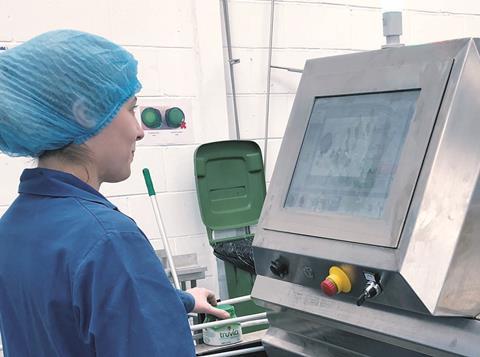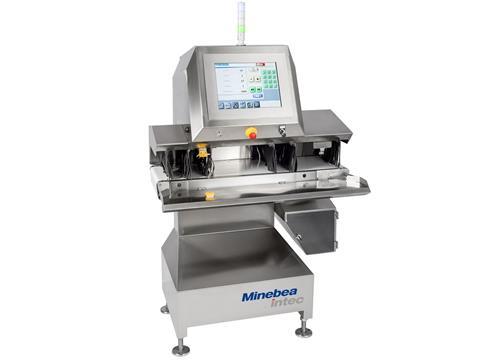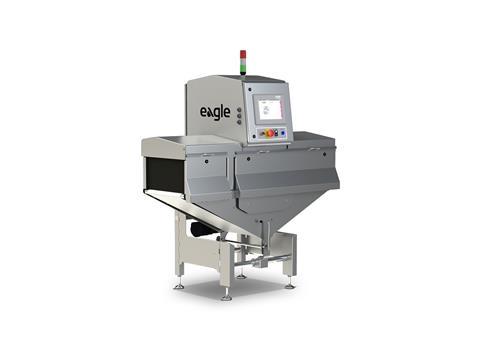
IFFA is opening its doors to the meat industry on 4-9 May 2019 and will feature exhibitors specialising in inspection such as Eagle Product Inspection, Ishida Europe and Fortress Technology Europe. Libby White caught up with these leading companies ahead of the fair to find out about the latest trends and focuses of inspection within the food industry. Minebea Intec also weigh in with their insights.
Interlinking trends

Dr Peter Golz, deputy managing director, VDMA
Dr Peter Golz, deputy managing director, VDMA Nahrungsmittelmaschinen und Verpackungsmaschinen highlights four main drivers of inspection for the meat industry: avoiding food fraud, establishing reliability to the customer, food safety, and automation.
“These four trends are interlinked,” he comments. “The core issue is to get the complete supply chain under control, from farm to fork. This has much to do with the organisation of logistic processes. E.g. you have to form virtual batches as small as possible to track down sources of contamination while keeping related recalls small in quantity.
“If you want to avoid food fraud you might consider serialisation, which depends on batch formation to follow the product through processing lines. Based on these technologies you also will be able to allow the customer to reliably trace back the origin of the processed meat in his shopping cart. These trends will also push forward automation with in- and near-line inspection results linked to the respective small virtual batches.”
Phil Brown, MD, Fortress Technology explains that traditionally, their equipment tended to sit end-of-line: “We are now seeing a push towards in-line inspection and an increase in demand to capture contaminants before they are too far down the process chain.”
For foreign body contamination the classic topics are still on the agenda: How to reliably detect small bone parts within processed products or how to discriminate plastic contaminations from meat? Dr Golz continues, “Progress in computing and interpreting data based on machine learning will enhance opportunities and might help to overcome economic limitations. I’m sure that we will see some progress on this issue at IFFA. This also should hold true inline inspection for sealing defects; e.g. by vision systems. Further, the trend to fully automated systems will facilitate the implementation of these systems.
“If it comes to quality inspection of processed meat, I expect that the focus will be on the laboratory side and the merging of information generated in laboratories with data from processing units. We see a trend in food industry to get quality inspection tools available transportable or near-line. In research we have seen projects for in-line non-invasive quality determination like the texture or the water content by means of combination of different sensor-technologies. Today, this is not state of the art but once available these technologies will open new opportunities to optimise meat processing.”
Simon King, head of global sales, service and marketing, Eagle Product Inspection is increasingly witnessing a greater degree of production line consolidation in order to optimise assets. “This leads to demand for increased throughput rates, greater line efficiency, a focus on OEE (overall equipment effectiveness), which leads to a demand for higher speeds and improved inspection results,” he remarks.
Widening materials: smaller scales
Clients are looking to expand inspection to a widening range of materials and on increasingly smaller scales, from metal to glass and even plastic.
“We are putting our energy and investment at the moment into detection technology,” Mr King says. “We can reliably find metal and bone for a customer, and now we can also find plastic. I think there will be a growth of hybrid systems in the near future- X-ray combined with vision systems i.e. infra-red in order to provide more complete solutions.”
At IFFA 2019, Fortress Technology will unveil how producers of low-profile meats can achieve high metal detection with the Interceptor DF. It is especially sensitive to ultra-thin metal contaminant flakes and foils that are difficult to detect on low profile, high value meats. To increase food safety, the Interceptor DF system addresses several previous limitations – notably orientation, size, geometry and position of metals. It’s especially reliable at detecting very thin flakes and foils that could be introduced in the mincing, grinding, cooking or slicing processes.
Rather than scanning a select number of frequencies, the conveyor-style metal detector inspects raw and packaged products vertically and horizontally at the same time.
The variety of foods and types of packaging that consumers can choose these days is wider than ever. As a result, food and beverage producers find themselves confronted with a vast number of potential sources of error during production and so will have numerous specifications for each of these processes.
With Dymond Bulk, Minebea Intec has developed an X-ray inspection system for bulk materials that enables efficient detection and elimination of all types of foreign objects when inspecting goods being fed into the production process ‘directly from the field’. Dymond Bulk provides excellent detection performance with raw materials such as vegetables, nuts, dried fruits or cereals.

Minebea Intec will soon be introducing its latest developments in side shooters for horizontal X-ray inspection: the Dymond D and a new version of its Dymond S. Compared to previously available systems, these advanced developments offer the user improved performance for more throughput or higher-density products as well as simplified integration into production lines. The new systems are designed for the reliable inspection of tins, Tetra Paks and other tall, upright packaging made from glass, metal or plastic.
Both developments have been designed by Minebea to help cut the amount of plastic packaging in the food industry in favour of more environmentally friendly materials: “Our new X-ray inspection systems should open the industry up to more design possibilities for products, packaging materials and container sizes, without jeopardising consumer safety,” says Thorsten Vollborn.
Food waste
Ciaran Murphy, quality inspection control business manager for EMEA, Ishida, adds that both retailers and consumers alike are focused on food waste- driving the trend towards greater control within the production line. “Checkweighers can help combat food waste by weighing food products and ensuring there is not too much or not enough. Inspection can also check for foreign bodies within the process and ensure food is not discarded on a batch level. Checking MAP activity and detecting leaks is also vital in ensuring products maintain their expected shelf-life, another way we can help fight against food waste.”
Ishida introduced a leak detection solution for MAP products a couple of years ago. Since then, it has been optimising the laser which is the heart of the platform and pushing the boundaries of speed expectations.
Learning from pharma
Eagle’s Simon King comments that full traceability and linking data across the supply chain is important from the manufacturing plant all the way to injecting a drug into the patient’s arm. He sees this ethos bleeding into the food industry and will become increasingly pervasive- concreting the idea of farm to fork.
“Currently the food industry is more orientated towards batch traceability and is not focused at individual item levels- yet. X-ray has real value in capturing images and generating unique identifiers- for example a serialisation code for a database that provides traceability throughout a supply chain. We are seeing the food arena moving in this direction.”

Eagle Product Inspection has very recently launched an X-ray platform which seeks to deliver high-inspection capabilities all the way from instruction to the software and interfacing systems, to the mechanical hardware. By integrating client’s detector technology to find smaller contaminants and run fast, Eagle Product Inspection aims to combine to give the best of both worlds with the view to eliminate false rejections.
Ciaran Murphy, Ishida adds that the pharmaceutical industry is driven by regulatory bodies rather than the end user. “The hot topic is blockchain traceability, from the farm to the fork. This is following a very similar direction towards what the pharma industry has been doing well for a considerable amount of time now.” Ishida has a number of IDCS data packages for checkweighers to monitor production and improve efficiency. Data capture and regular verification can help assist with market compliance.
Down the supply chain
Some of the large food retailers are delivering far more exacting quality expectations- which in turn are being pushed back through the supply chain. Simon King explains this is presenting a major challenge for equipment providers and driving the need to deliver higher performance.
Retailers cannot afford a recall or contaminant issue, “We’ve seen the consequences of that many times,” underlines Simon King.
Brand protection and food safety are the predominant factors. Last year, a nationwide crisis in Australia saw its multi-million dollar strawberry industry suffer financial losses after needles were found in the fruit. “There is always an element of contaminant risk: this malicious attack is probably one of the hardest examples to address,” Phil Brown believes. “We were involved in helping to resolve this issue and supplied our equipment. How you apply the equipment to maximise finding contaminants is key.” It’s important to minimise risk as much as possible.
Ishida’s Ciaran Murphy adds that the more demands regulators and retailers are placing on food producers- this in turn goes down the chain towards the equipment providers. “Retailers still carry out independent audits and historically these used to be very prescriptive- for example indicating exactly where a food producer needs to install a metal detector on a production line.
“M&S has recently moved towards providing guidance rather than a prescriptive code of practice. I think a lot of retailers will move in this direction.” Ishida is seeing its role as moving from providing equipment towards partnering with food producers to offer consultancy.











